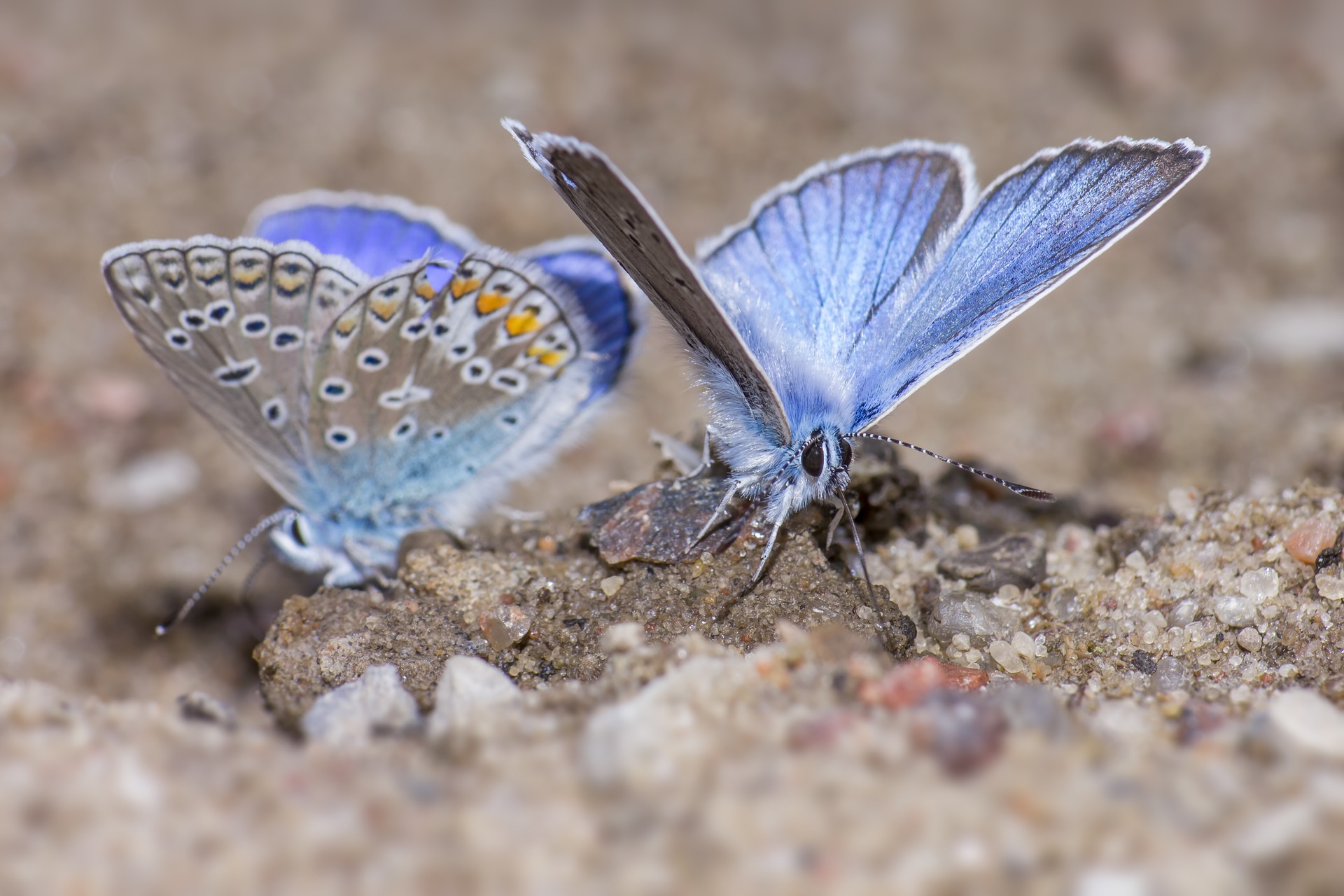The Blue-spot Hairstreak (Polyommatus dorylas), also known as the Turquoise Blue, is a visually striking butterfly belonging to the family Lycaenidae. Here’s an overview of this butterfly:
Appearance:
- Size: The wingspan of the Blue-spot Hairstreak ranges from 28 to 32 millimeters.
- Coloration:
- Males: The upper sides of the wings are a bright, shimmering blue with a narrow black border.
- Females: The upper sides are brown with a dusting of blue scales, primarily near the base of the wings.
- Undersides: Both sexes have pale greyish-brown undersides adorned with black spots circled in white. The hindwings feature a distinctive row of orange spots along the margin and a characteristic blue spot near the tail, hence the common name.
Habitat:
- Preferred Habitats: The Blue-spot Hairstreak prefers calcareous grasslands, dry meadows, and slopes with sparse vegetation. They are often found in areas with an abundance of flowering plants and shrubs.
- Geographic Range: This species is found across southern and central Europe, extending into parts of the Middle East and Asia Minor. They are particularly prevalent in mountainous and hilly regions.
Behavior:
- Feeding: Adults feed on nectar from a variety of flowers, including thyme, marjoram, and other herbaceous plants. The larvae feed on legumes, particularly species of the genus Hippocrepis.
- Activity: They are active during sunny days, often seen fluttering close to the ground or resting on flowers with their wings closed.
- Flight: The flight of Polyommatus dorylas is fast and erratic, typical of many Lycaenid butterflies.
Life Cycle:
- Eggs: Females lay eggs singly on the flower buds or leaves of host plants.
- Larvae: The caterpillars are green with a darker dorsal line, camouflaging well with their host plants. They may also be tended by ants, which offer protection in exchange for honeydew.
- Pupae: Pupation occurs close to the ground, often within leaf litter or at the base of the host plant. Pupae are well camouflaged and can overwinter in this stage.
- Adults: Adults typically emerge in one or two broods, flying from late May to August, depending on the altitude and latitude.
Ecological Role:
- Pollination: As nectar feeders, adults contribute to the pollination of various flowering plants.
- Ant Mutualism: The larvae’s relationship with ants highlights an interesting ecological interaction, providing benefits to both species.
- Food Web: Both larvae and adults serve as prey for various predators, including birds, spiders, and parasitic insects.
Conservation Status:
- Population: While not globally threatened, local populations of the Blue-spot Hairstreak can be at risk due to habitat destruction.
- Threats: Habitat loss from agricultural expansion, urbanization, and the decline of traditional grassland management practices are significant threats.
Conservation Efforts:
- Habitat Management: Conservation strategies include maintaining and restoring calcareous grasslands, promoting traditional grazing practices, and ensuring the availability of host plants.
- Monitoring: Populations are monitored to track changes in distribution and abundance, helping guide conservation actions.
Interesting Facts:
- Color Variations: The blue coloration in males can be quite vivid, particularly in fresh individuals.
- Ant Associations: The larvae’s symbiotic relationship with ants is a fascinating aspect of their biology, enhancing their survival rates.
- Seasonal Adaptations: In mountainous regions, the species is adapted to shorter growing seasons, often resulting in a single annual brood.
Identification Tips:
- Blue Males: Look for the bright blue upper wings of males, which are conspicuous when they are basking in the sun.
- Underside Patterns: The orange and blue spots on the hindwings’ undersides are distinctive and help in identifying this species.
- Habitat Preference: Observing them in calcareous grasslands and dry meadows can aid in accurate identification.
In summary, the Blue-spot Hairstreak (Polyommatus dorylas) is a beautiful and ecologically significant butterfly with a preference for calcareous grasslands and dry meadows. Its vivid coloration, fascinating ant associations, and specific habitat requirements make it an important species for conservation efforts across its range.
Visited 197 times, 25 visit(s) today
Views: 319
Subscribe to the newsletter:
